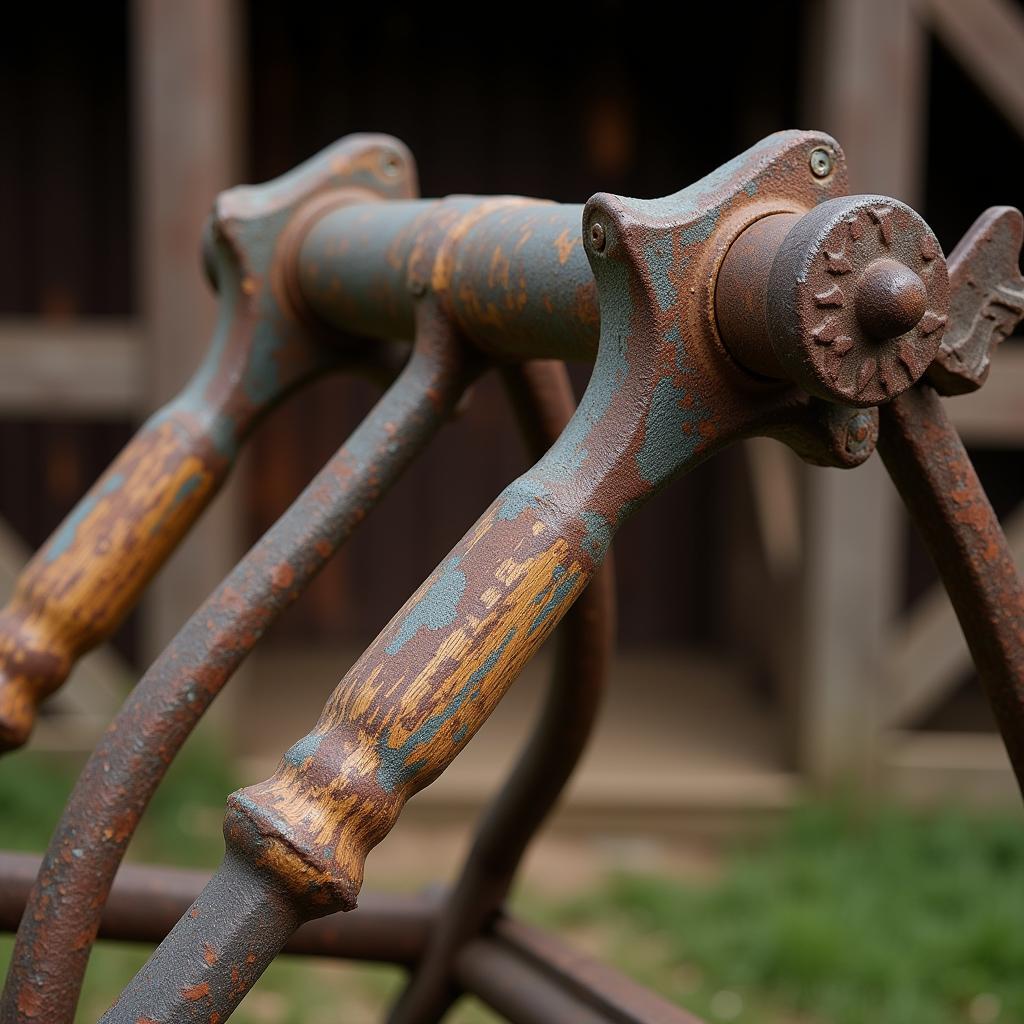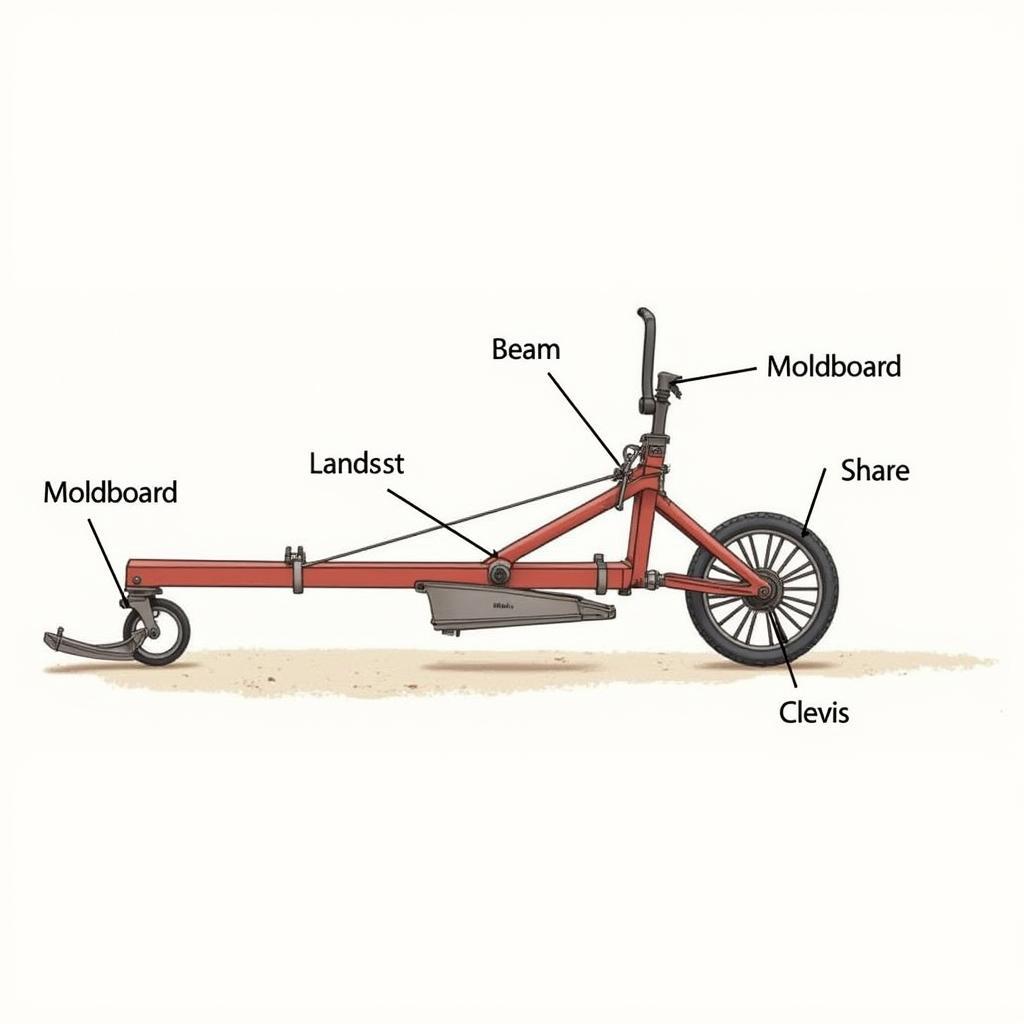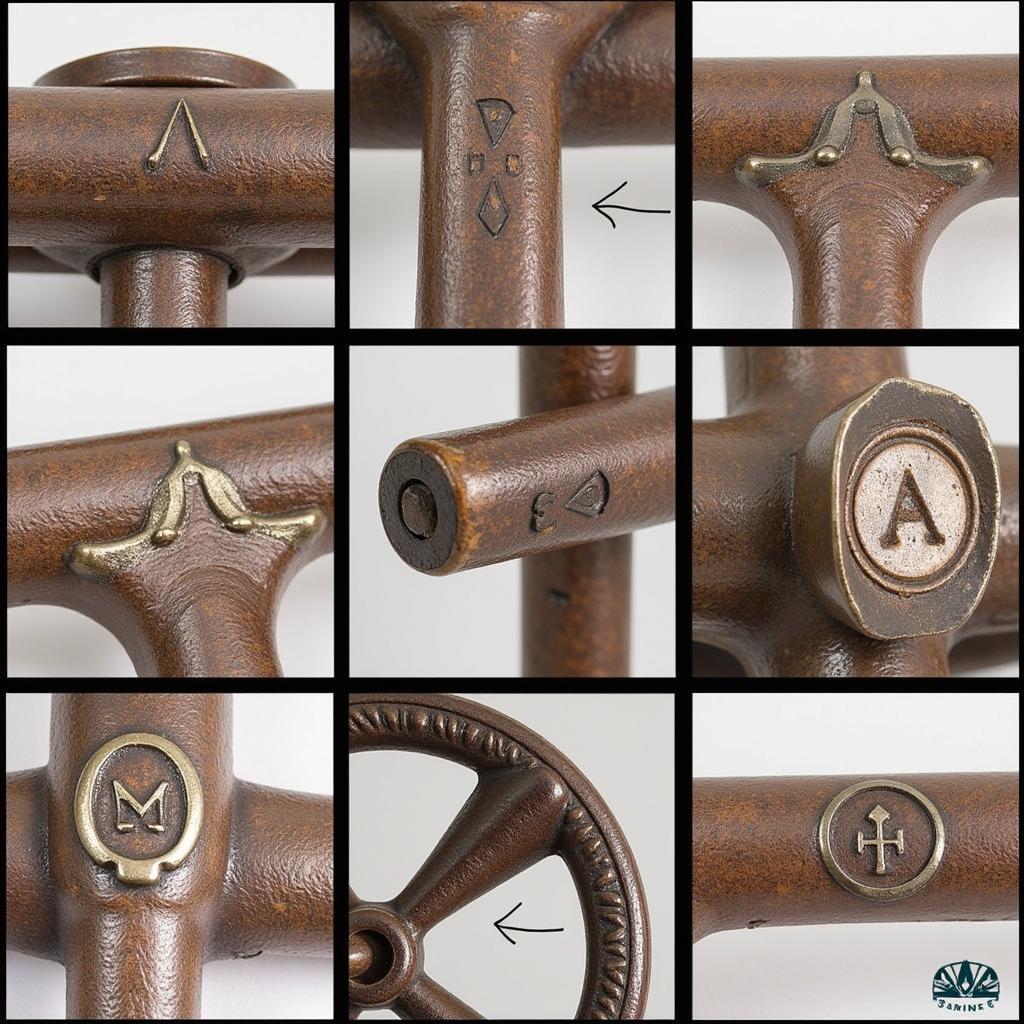Identifying a walking horse-drawn plow can be an intriguing journey into agricultural history. Whether you’ve inherited a family heirloom or stumbled across a rusty relic at an antique shop, knowing what to look for can help you unlock the story behind these fascinating tools. This guide delves into the key features and variations to consider when identifying a walking horse-drawn plow.
 Antique Walking Plow
Antique Walking Plow
Understanding the Basics of Walking Plows
Before we delve into specific identification markers, let’s establish a basic understanding of what constitutes a walking horse-drawn plow. Unlike riding plows, which required the operator to sit, walking plows were designed to be maneuvered by someone walking behind, guiding the plow through the soil with the handles. These plows were generally smaller and lighter than their riding counterparts, making them ideal for smaller farms and fields.
Key Components to Identify a Walking Plow
 Walking Plow Components
Walking Plow Components
Identifying a walking horse-drawn plow involves examining key components that can reveal its age, maker, and intended use. These components include:
- The Beam: This is the main horizontal backbone of the plow, typically made of wood or later, steel. Look for markings, stamps, or unique construction details that might indicate the maker.
- The Handles: These were the operator’s control center. Examine the wood type, joinery, and any metal reinforcements for clues about the plow’s age and craftsmanship.
- The Moldboard: This curved metal plate turned the soil, and its shape can tell you a lot about the type of soil it was designed to work.
- The Share: This is the cutting edge of the plow, usually made of hardened steel. Its shape and wear patterns can indicate the plow’s use history.
- The Landside: This flat piece helps stabilize the plow. Look for wear patterns that can indicate how the plow was adjusted and used.
- The Clevis: This adjustable hitch connected the plow to the horse’s harness.
Dating Your Walking Horse Drawn Plow
Pinpointing the exact age of an antique plow can be tricky, but here are some helpful indicators:
- Construction Materials: Early plows were primarily wooden, while later models incorporated more cast iron and eventually steel.
- Design Features: Changes in moldboard design, handle adjustments, and other features can often be linked to specific periods.
- Maker’s Marks: Look for any embossed or stamped markings, often found on the beam or metal components. Researching these marks can often lead you to the manufacturer and potentially a date of production.
Popular Walking Plow Manufacturers
 Antique Plow Maker's Marks
Antique Plow Maker's Marks
Throughout the 19th and early 20th centuries, numerous companies specialized in manufacturing walking plows. Some of the most well-known include:
- John Deere: Recognizable by their distinctive green and yellow colors, John Deere plows were known for their quality and durability.
- Oliver Chilled Plow Company: Oliver plows were often distinguished by their unique chilled iron construction, which made them resistant to wear.
- International Harvester: This company produced a wide variety of agricultural implements, including a range of walking plows.
Beyond Identification: Preserving History
Successfully identifying your walking horse-drawn plow is just the first step. Proper cleaning, rust removal, and preservation techniques are essential to protect these pieces of history. Consider documenting your findings with photographs and detailed descriptions to share with future generations.
FAQs About Walking Horse Drawn Plows
1. What is the difference between a walking plow and a sulky plow?
A walking plow required the operator to walk behind, while a sulky plow had a seat for the operator, making it easier to control in larger fields.
2. Are walking horse-drawn plows still used today?
While largely replaced by modern tractors, walking plows are still used by some small-scale farmers and for historical demonstrations.
Need More Information?
Do you need help identifying your antique farm equipment? Contact our experts at Justus Horses USA. We are passionate about preserving agricultural history and can provide valuable insights and guidance.
Call us at: 0772127271
Email us at: [email protected]
Visit us at: QGM2+WX2, Vị Trung, Vị Thuỷ, Hậu Giang, Việt Nam
Our team is available 24/7 to answer your questions and offer expert advice.